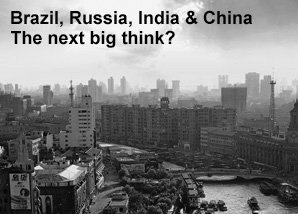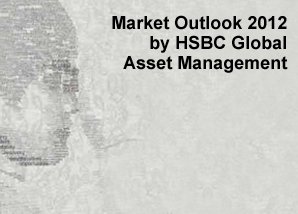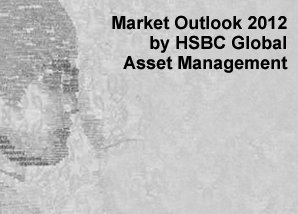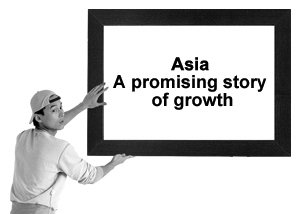Since the global financial crisis in 2008, China has been a beacon of light to the global economy. The world’s second largest economy has continued to grow at a rapid pace thanks to its stellar economic performance and ever increasing appetite for consumption as China continued to prosper.
Unfortunately, what goes up must eventually come down. Following three decades of rapid progress when China averaged 10% growth a year – delivering the fastest economic development and reduction in poverty in world history3 – the Chinese government is targeting for annual economic growth of just 7% this year, which would be the slowest in half a quarter century1
Not surprisingly, the Chinese stock market has taken a tumble in 2015 in the wake of the country’s cooling economy. After rising rapidly around the middle of 2014 and shooting up by 150% in just 12 months, Chinese stock prices have since fallen sharply.4
So is China really in trouble?
China’s Sea of Red
From its highest index level in June 2015, the Chinese market lost as much as 30% in the following one-month period.5 The trading of more than 1,300 listed companies (or more than 40% of the market capitalisation) were halted on 8 July 2015 as companies opted to suspend the trading of shares amidst volatile market conditions.5
In an effort to stabilise the market, the Chinese government imposed a series of measures to support the market, in particular all state-owned enterprises and major shareholders of listed companies were not allowed to sell their stocks over the next few months and all Initial Public Offerings in the pipeline were suspended until the end of 2015.5
In addition, the People’s Bank of China promised to provide unlimited liquidity support to the financial system through the China Securities Finance Corporation, partly through investing into equity funds through five asset managers in order to mitigate mutual fund redemption pressures, and also to provide support for brokers’ margin financing businesses.5 Margin trading rules were also relaxed so that brokers were no longer required to force the sale of stocks held by clients with insufficient collateral.5
However, these measures seem to have done little to arrest the Chinese stock market’s downward slide. The People’s Bank of China’s move to devalue the Yuan by almost 2% on 10 August 2015, in an effort to respond to the recent economic slowdown in China has only served to exacerbate the market.6 Shares in Beijing began to drop almost immediately in the following days, culminating to a Black Monday on 24 August 2015 when the Shanghai stock composite fell by 8.5%.6
As of end August 2015, the Shanghai Composite Index is down by around 60% from its peak in June 2015.4
Just a Bump, Perhaps
So is China really in trouble? China’s stock market is small, relative to the economy with a tradable value of a third of its GDP, when compared with more than 100% in developed economies. The correlation between stocks and economic fundamentals in China is small.2 For example, when the Chinese stock market went bust in 2007 with equities falling almost 70% over the next year, the country’s GDP growth actually increased.4
Less than a fifth of China’s household wealth is invested in shares.2 As a result, the share market boom had little material affect to boost consumption and the reverse will probably hold true as a result of the crash.2 Also, the boom of Chinese stocks may be related to easier credit becoming available for small investors who make up around 80% of the Chinese stock market, a far bigger percentage compared to developed countries where institutional investors dominate.4 These same small investors are more jittery,4 and therefore could be the cause of the market sell-off.
“There is no clear fundamental reason for the sell-off other than sentiment and deleveraging. While it can be too early to determine whether China Securities Finance Corporations’s tightening of margin financing and cracking down on over-the-counter leverage can help immediately shore up investor confidence, we think that the Chinese policymakers have flexibility to roll out further measures if the market continues to fall,” said Mandy Chan, Head of China and HK Equities, HSBC Global Asset Management referring to China’s equities crash.5
Riding Out the Crisis
Other areas of the Chinese economy are more significant compared to equities. The property market accounts for the vast majority of collateral in China’s financial system and has a much bigger impact on driving economic growth.2 While the stock market crash has dominated the headlines, the property market has been recovering with house prices improving across China for three straight months since June 2015.2
The heavy and manufacturing industries may be struggling, but the service sector, which now accounts for a bigger share of national output than industry is growing substantially.2 Retail sales grew 10.8% in August 2015 from a year ago, above forecasts of 10.5%.1
In an effort to boost the economy, China’s central bank cut interest rates and reduced reserve ratio requirements7 of banks in late August 2015.2
According to Mandy Chan, the interest rate cuts and reserve ratio requirement cuts could lower financing costs, increase liquidity and provide downside support to the economy as a whole.8
“We believe the government could roll out further targeted measures in the near term with focus on property, infrastructure spending and state-owned enterprise mergers and acquisitions.”8 Chan added that the latest policy action demostrates the Chinese government’s commitment in maintaining stable economic growth.8 “This, together with looser monetary conditions and expectations for further policy support is positive for Chinese equities. The cuts would especially benefit interest rate sensitive industries such as banks and properties,” she said.8
Room to Move
As bad as China’s economy may look, the country may well be better positioned than others to ride out the storm.3 Yes, China’s economy may be slowing down as it shifts from export-led growth to consumption. But even at an anticipated “slower” 7% growth rate, it’s still nearly three times better than Britain and the United States – the west’s current star performers.3
On the fiscal side, amidst all the stimulus measures, the Chinese government has exercised significant restraint targeting a budget deficit of 2.3% of GDP in 2015, higher than in previous years.2 But as of July 2015 the country was still in surplus, having raised more in taxes than it had spent.2 This indicates China still has plenty of reserves left in the tank if it wants to accelerate its growth.2
Sources: 1 CNBC.com, China’s Economic Growth Sputters in August, September 13, 2015. 2 Economist.com, Taking a Tumble, August 29, 2015. 3 The Guardian.com, China Can Ride Out This Crisis. But We’re on Course for Another Crash, August 25, 2015. 4 The Independent.co.uk, Everything You Need to Know About China’s Stock Market Collapse, August 24, 2015. 5 HSBC Global Asset Management, One-on-One Interview: Down but Not Out, July 2015. 6 International Business Times.com, China ‘Black Monday’ Timeline: The Chinese Stock Market Crash and How it Happened, August 24, 2015. 7 Definition of “reserve ratio requirements”: the portion (expressed as a percent) of depositors’ balances banks must have on hand as cash. This is a requirement determined by the country’s central bank. The reserve ratio affects the money supply in a country, www.investopedia.com, undated. 8 HSBC Global Asset Management, One-on-One Interview: Impact of ‘Double Cuts’ and RMB Devaluation on Chinese Equities, September 2015.


 LIKE THIS ARTICLE?
LIKE THIS ARTICLE?





















